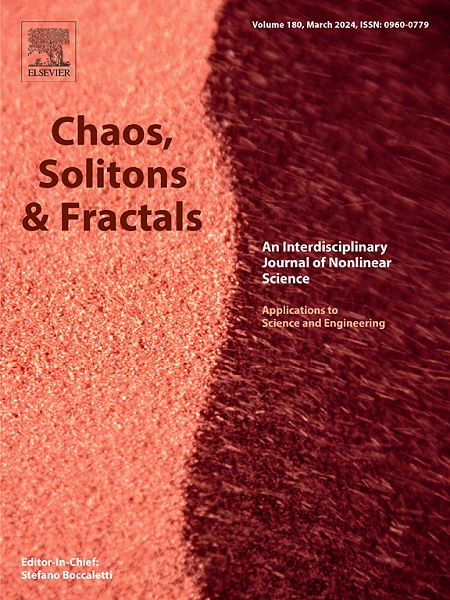谐波和泊松激励下滞回系统的随机动力学
IF 5.6
1区 数学
Q1 MATHEMATICS, INTERDISCIPLINARY APPLICATIONS
引用次数: 0
摘要
滞回是工程结构中一种常见的非线性现象,已得到广泛的研究。然而,在确定性和随机联合激励下,滞回系统的非线性行为仍然没有得到充分的研究。研究了滞回系统在谐波和泊松白噪声激励下的随机响应和p分岔问题。采用径向基函数神经网络(RBFNN)方法求解控制系统概率密度函数的广义Fokker-Planck-Kolmogorov (GFPK)方程。具体地说,GFPK方程的试解由一组标准高斯函数表示。损失函数包含GFPK方程的残差和归一化约束。将权重系数的优化转化为求解一个代数方程组,极大地加快了训练过程。所得到的PDF解用于揭示Bouc-Wen和可积Duhem滞回系统中的随机p分岔现象。当随机激励从泊松噪声转变为高斯噪声时,可以观察到分岔位移。该方法与蒙特卡罗模拟(MCS)结果吻合较好,证明了该方法在谐波和非高斯联合激励下分析复杂随机动力学的有效性。本文章由计算机程序翻译,如有差异,请以英文原文为准。
Stochastic dynamics of hysteresis systems under harmonic and Poisson excitations
Hysteresis, a common nonlinear phenomenon in engineering structures, has been extensively studied. However, the nonlinear behavior of hysteretic systems under combined deterministic and random excitations remains insufficiently explored. This paper investigates the stochastic response and P-bifurcation of hysteretic systems under harmonic and Poisson white noise excitations. The generalized Fokker–Planck–Kolmogorov (GFPK) equation governing the probability density function (PDF) of the system is solved using a radial basis function neural network (RBFNN) method. Specifically, the trial solution of the GFPK equation is represented by a set of standard Gaussian functions. The loss function incorporates both the residual of the GFPK equation and a normalization constraint. Optimization of the weighting coefficients is transformed into solving a system of algebraic equations, which significantly accelerates the training process. The resulting PDF solutions are used to reveal stochastic P-bifurcation phenomena in both Bouc–Wen and integrable Duhem hysteretic systems. Bifurcation shifts are observed as the random excitation transitions from Poisson to Gaussian noise. The proposed approach is validated by close agreement with Monte Carlo simulation (MCS) results, demonstrating its effectiveness for analyzing complex stochastic dynamics under combined harmonic and non-Gaussian excitations.
求助全文
通过发布文献求助,成功后即可免费获取论文全文。
去求助
来源期刊

Chaos Solitons & Fractals
物理-数学跨学科应用
CiteScore
13.20
自引率
10.30%
发文量
1087
审稿时长
9 months
期刊介绍:
Chaos, Solitons & Fractals strives to establish itself as a premier journal in the interdisciplinary realm of Nonlinear Science, Non-equilibrium, and Complex Phenomena. It welcomes submissions covering a broad spectrum of topics within this field, including dynamics, non-equilibrium processes in physics, chemistry, and geophysics, complex matter and networks, mathematical models, computational biology, applications to quantum and mesoscopic phenomena, fluctuations and random processes, self-organization, and social phenomena.
 求助内容:
求助内容: 应助结果提醒方式:
应助结果提醒方式:


